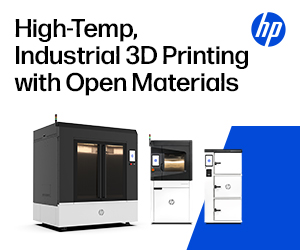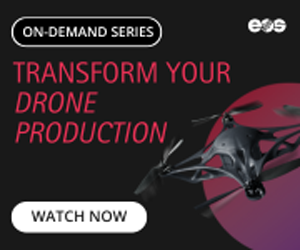Great food often has an element of surprise. Sometimes, that surprise may come as an unexpected flavor—say, a hint of star anise in an otherwise ordinary French onion soup. But, sometimes, the surprise may come from the “wow factor” it delivers as soon as it is presented. Lately, few things have surprised and wowed me more than the incredible food products made possible by 3D printing – especially the exquisitely detailed miniature works of art made by Sugar Lab.
3D Printed Sugary Treats
Sugar Lab is one of the biggest names in 3D printed food, a ‘digital bakery’ in Los Angeles that makes some of the most unique confections in the world. Sugar Lab’s technology is proprietary, and unlike any other food printing system. They put it to astonishing use, realizing exciting creative concepts that couldn’t be produced using any other means. These include “strawberry-covered chocolates,” a clever inversion in which rich chocolate ganache is encased in a strawberry sugar shell; kimchi bouillon formed into tiny octopi, fried chicken legs, and Napa cabbages; lime wedges that dissolve into glitter bombs when dropped into your favorite tequila-based cocktail; and, most recently, a collection of edible RPG dice to tie in with the latest season of Stranger Things. Each one of these remarkable items has the coarse texture of a sugar cube, but they appear as if they have been assembled grain-by-grain, giving them a minutely detailed, pointillistic appearance. Their craft beer bonbon collection look like perfect little Sylvanian Families-sized cans of hazy IPA and stout.
I spoke to William Hu, Creative Director at Sugar Lab, about how the company came to be, and what its motivation was for making such singular sweets. Though Sugar Lab’s initial commercial offering focused on things like cake toppers and wedding favors, the company quickly became more ambitious artistically once the team came to fully appreciate the potential of the technology and caught the attention of high-end chefs and mixologists. In the early days, William recalls, “it was like market testing and figuring out what people like. We were developing recipes in house, and we were our own clients and creating our own recipes, which was really awesome.”
William says that one of the most exciting aspects of the technology is that it allows for shapes and colors to be produced in ways that simply can’t be made any other way. “What got us excited about it was that we could make shapes that were impossible to replicate by hand – like hollow shapes, geometrically perfect forms – and 3D printing with full color. The patterns would come out so intricately. It was just fascinating to us.” Indeed, there is a certain “how did they do that?” quality to Sugar Lab’s products. I get the impression that working there never gets old because the capacity for creativity is so great.
Marrying Culture and Cuisine
Sugar Lab’s ability to marry clear, precise graphic design with flavor means their food can carry many layers of impact and meaning. Their Koreatown collection, for example, contains candies in the shape of little Yakult bottles, the Korean characters for “cheers,” and traditional Korean sweets. “It touches on visual culture and a visual language that we really found compelling,” William says. “We wanted to do a taste of LA.” This sense of place or meaning behind food is often lost when the food is removed from its cultural context; Sugar Lab’s technology allows context (or subtext) to be communicated explicitly through the form and color of the candy itself. The visual cues prompt the eater to consider the cultural connotations of the food, rather than just appreciating its flavor.
Of course, flavor shouldn’t be an afterthought, either. Sugar Lab would not be the success it is if its products didn’t deliver deliciousness, which it definitely does. The hazy IPA bonbons are filled with a velvety smooth milk chocolate that carries the distinct fruity bitterness of New World hops. The kimchi bouillon tastes, astonishingly but perhaps not surprisingly, just like kimchi: strongly flavored, but not so sweet, salty, or spicy that it would ruin a broth that has already been seasoned. And the texture of the 3D printed sugar shells is interesting on a sensory level, too. It’s rough and sandy, but also tender and yielding. Its unusual graininess prompts you to pay attention to what you’re eating, which has the effect of making you perceive more of the sweets’ complex flavor notes.
Sometimes, when 3D printing technology is applied to food, it can feel like a pointless gimmick, but when it is used purposefully and thoughtfully as it is at Sugar Lab, its artistic merit is self-evident. The sweets they produce are not only visually beautiful and imbued with a sense of playfulness, they’re also filled with meaning, as deep and complex as a single-origin dark chocolate ganache – which they are also sometimes filled with.
Subscribe to Our Email Newsletter
Stay up-to-date on all the latest news from the 3D printing industry and receive information and offers from third party vendors.
Print Services
Upload your 3D Models and get them printed quickly and efficiently.
You May Also Like
3D Printing Predictions for 2026: Scaling AM Through Software
For several years, we have seen additive manufacturing software play a more central role in our industry. LPBF machines achieve higher yields and can produce thinner-walled parts thanks to the...
Who Merged, Who Was Acquired, and Who Disappeared in 3D Printing in 2025
2025 was a year of change for 3D printing, with much of the year’s activity coming from mergers, acquisitions, restructurings, and company exits. Together, these moves indicate a broader shift:...
3D Printing News Briefs, December 27, 2025: Additive Construction in the U.S., Canada, & India
In this holiday weekend’s 3D Printing News Briefs, the focus is entirely on additive construction! We’ll start with news out of North America, specifically Canada and the United States, and...
A Year in 3D Prints: A Visual Journey Through 2025 in AM
2025 was a year of milestones and experimentation in additive manufacturing (AM), marked not only by technical progress but also by the mergers, acquisitions, and restructurings that reshaped the industry,...

































